Popular categories
Looking for a yarn?

50% Wool, 25% Alpaca, 25% Viscose
from 4.35 € /50g
Order DROPS Kid-Silk from Camellia

|
DROPS Kid-Silk uni colour 75% Mohair, 25% Silk |
5.05 € /25g |
Order |
Clicking the ORDER button will redirect you to Camellia website
The yarn cost is calculated from the pattern’s smallest size and the yarn’s cheapest product type. Looking for an even better price? You might find it on the DROPS Deals!
Caramel Macchiato
Knitted jumper in DROPS Soft Tweed and DROPS Kid-Silk. Piece is knitted bottom up with English rib. Size: S - XXXL
DROPS design: Pattern st-021
Yarn group A and B
----------------------------------------------------------
SIZE:
S - M - L - XL - XXL - XXXL
MATERIALS:
DROPS SOFT TWEED from Garnstudio (belongs to yarn group B)
450-500-550-600-650-750 g colour 03, sand
And use:
DROPS KID-SILK from Garnstudio (belongs to yarn group A)
150-175-175-200-200-225 g colour 01, off white
NEEDLES:
DROPS CIRCULAR NEEDLE SIZE 5.5 mm: Length 40 and 80 cm.
DROPS CIRCULAR NEEDLE SIZE 4 mm: Length 40 and 80 cm.
DROPS DOUBLE POINTED NEEDLES SIZE 5.5 mm
DROPS DOUBLE POINTED NEEDLES SIZE 4 mm
The technique MAGIC LOOP can be used – you then only need circular needle of 80 cm in each size.
KNITTING TENSION:
13 stitches in width and 36 rows vertically with English rib (18 visible rows counted in knit stitch) and 1 strand of each quality = 10 x 10 cm.
NOTE! Remember that needle size is only a suggestion. If you have too many stitches on 10 cm switch to larger needles. If you have too few stitches on 10 cm switch to smaller needles.
-------------------------------------------------------
Alternative Yarn – See how to change yarns here
Yarn Groups A to F – Use the same pattern and change the yarn here
Yarn usage using an alternative yarn – Use our yarn converter here
-------------------------------------------------------

50% Wool, 25% Alpaca, 25% Viscose
from 4.35 € /50g
Order DROPS Soft Tweed from Camellia

|
DROPS Kid-Silk uni colour 75% Mohair, 25% Silk 5.05 € /25g Order |
Clicking the ORDER button will redirect you to Camellia website
The yarn cost is calculated from the pattern’s smallest size and the yarn’s cheapest product type. Looking for an even better price? You might find it on the DROPS Deals!
- English (UK/cm), Latvia
- Česky
- Dansk
- Deutsch
- Eesti keel
- English (UK/cm)
- English (US/in)
- Español
- Français
- Íslenska
- Italiano
- Magyar
- Nederlands
- Norsk
- Polski
- Português
- Suomi
- Svenska
- English (UK/cm), Bulgaria
- English (UK/cm), Croatia
- English (UK/cm), Greece
- English (UK/cm), Lithuania
- English (UK/cm), Romania
- English (UK/cm), Slovenia
- Česky, Slovakia
Pattern instructions
EXPLANATION FOR THE PATTERN:
----------------------------------------------------------
GARTER STITCH (back and forth):
Knit all rows.
1 ridge vertically = knit 2 rows.
ENGLISH RIB back and forth (applies to front and back piece):
ROW 1 (= wrong side): Work 1 edge stitch in garter stitch, * Make 1 yarn over, slip 1 stitch on to right needle purlwise, knit yarn over and slipped stitch together *, work from *-* until 1 stitch remains, make 1 yarn over, slip 1 stitch on to right needle purlwise and cast on 1 new stitch and the end of row.
ROW 2 (= right side): Work 1 edge stitch in garter stitch, * knit yarn over and slipped stitch together, make 1 yarn over, slip 1 stitch on to right needle purlwise *, work from *-* until 2 stitches remain, knit yarn over and slipped stitch together and 1 edge stitch in garter stitch.
ROW 3 (= wrong side): Work 1 edge stitch in garter stitch, * make 1 yarn over, slip 1 stitch on to right needle purlwise, knit yarn over and slipped stitch together *, work from *-* until 2 stitches remain, make 1 yarn over, slip 1 stitch on to right needle purlwise and 1 edge stitch in garter stitch.
ROW 4 (= right side): Work 1 edge stitch in garter stitch, * knit yarn over and slipped stitch together, make 1 yarn over, slip 1 stitch on to right needle purlwise *, work from *-* until 2 stitches remain, knit yarn over and slipped stitch together and 1 edge stitch in garter stitch.
Repeat rows 3 and 4.
ENGLISH RIB in the round (applies to body and sleeves):
ROUND 1: * Make 1 yarn over, slip 1 stitch purlwise, knit yarn over and slipped stitch together *, repeat from *-* the entire round.
ROUND 2: * Purl yarn over and the slipped stitch together, make 1 yarn over, slip 1 stitch purlwise *, repeat from *-* the entire round.
Repeat rounds 1 to 2.
ENGLISH RIB STITCH:
When counting the stitches, the yarn overs are not counted as stitches.
DECREASE TIP (applies to neck):
All decreases are done on a row from the right side!
DECREASE 2 STITCHES AT THE BEGINNING OF ROW AS FOLLOWS:
Work 1 edge stitch in garter stitch and 1 English rib stitch as before, slip next stitch and related yarn over on to right needle knitwise, knit the next 2 stitches (and related yarn over) together and lift slipped stitch and yarn over over stitches worked together.
DECREASE 2 STITCHES AT THE END OF ROW AS FOLLOWS: Work until 5 stitches remain, knit the next 3 stitches (and related yarn overs) together, work 1 English rib stitch as before and 1 edge stitch in garter stitch.
INCREASE TIP (applies to sleeves):
Work 3 stitches in 1 knit stitch as follows:
Knit yarn over and stitch together but wait to slip stitch and yarn over off the needle, make 1 yarn over on right needle and knit stitch and yarn over together 1 more time, then slip knit stitch and yarn over knitted off left needle = 3 stitches. Increase alternately in first and last knit stitch on round. Do first increase in first knit stitch, second increase in last knit stitch etc.
----------------------------------------------------------
START THE PIECE HERE:
----------------------------------------------------------
JUMPER - SHORT OVERVIEW OF THE PIECE:
Work body in the round, bottom up. Divide the piece for front piece and back piece and finish each part separately back and forth. Work sleeves in the round on double pointed needles/a short circular needle. Neck edge is worked in the round.
BODY:
Cast on 216-228-246-270-288-312 stitches on circular needle size 4 mm with 1 strand of each quality. Knit 1 round. Work rib (purl 2/knit 1).
When rib measures 5 cm, work next round as follows:
* Purl 2 together, make 1 yarn over, slip 1 stitch on to right needle purlwise *, work from *-* over all stitches = 144-152-164-180-192-208 stitches. Switch to circular needle size 5.5 mm. Work ENGLISH RIB in the round - read explanation above. Read ENGLISH RIB STITCH!
When piece measures 37-38-39-40-41-42 cm, adjust so that next round is 1st round in English rib, divide the piece into front piece and back piece as follows:
Insert 1 marker at the beginning of the round, decrease 1 stitch by knitting together 2 stitches + 1 yarn over, work as before over the next 70-74-80-88-94-102 stitches, insert 1 marker, decrease 1 stitch by knitting together 2 stitches + 1 yarn over, work as before over the last 70-74-80-88-94-102 stitches and cast on 1 new stitch at the end of the round. There are 71-75-81-89-95-103 stitches between markers for front and back pieces + 1 edge stitch at the end of the round. Now finish each part separately.
BACK PIECE:
Now work ENGLISH RIB back and forth – read explanation above (work first row from wrong side). When the first row has been worked, there are 73-77-83-91-97-105 stitches on needle. Work English rib with 1 edge stitch in garter stitch in each side. When piece measures 52-54-56-58-60-62 cm, cast off the middle 23-23-25-25-27-27 stitches for neck on next row from right side and finish each shoulder separately (25-27-29-33-35-39 stitches remain on each shoulder). On next row from right side decrease 2 stitches for neck – read DECREASE TIP = 23-25-27-31-33-37 stitches. Cast off with knit over knit and purl over purl when piece measures 56-58-60-62-64-66 cm (work yarn overs together with stitch they belong to). Work the other shoulder the same way.
FRONT PIECE:
Slip stitches back on circular needle size 5,5 mm, start casting on 1 new stitch at the end of the row (seen from right side), turn piece and work ENGLISH RIB back and forth as back piece until piece measures 48-50-50-52-52-54 cm. On next row from right side, slip the middle 15-15-17-17-19-19 stitches on a thread for neck and finish each shoulder separately (29-31-33-37-39-43 stitches remain on each shoulder). On next row from right side decrease 2 stitches for neck. Decrease like this every 8th-8th-10th-10th-12th-12th row 3 times in total = 23-25-27-31-33-37 stitches. Cast off with knit over knit and purl over purl when piece measures 56-58-60-62-64-66 cm (work yarn overs together with stitch they belong to). Work the other shoulder the same way.
SLEEVES:
Cast on 54-54-57-60-63-66 stitches on double pointed needles size 4 mm with 1 strand of each quality. Knit 1 round. Work rib (purl 2/knit 1). When rib measures 5 cm, work next round as follows: * Purl 2 together, make 1 yarn over, slip 1 stitch on to right needle purlwise *, work from *-* over all stitches = 36-36-38-40-42-44 stitches.
Switch to double pointed needles size 5.5 mm. Work ENGLISH RIB in the round.
When sleeve measures 20-20-18-16-14-12 cm, increase 2 stitches on next round - read INCREASE TIP. Work the increased stitches in English rib. On first round work the increased stitches without yarn overs.
Increase like this every 10th round 7-8-9-9-9-9 times in total = 50-52-56-58-60-62 stitches.
Cast off with knit over knit and purl over purl (work yarn overs together with stitches they belong to) when sleeve measures 47-46-45-43-42-40 cm.
Work the other sleeve the same way.
ASSEMBLY:
Sew the shoulder seams.
Sew in sleeves inside 1 edge stitch along armholes.
NECK EDGE:
Pick up approx. 84 to 114 stitches (including stitches on thread) on a short circular needle size 4 mm with 1 strand of each quality. Work yarn overs that belong to English rib stitches from thread together with stitch they belong to. Number of stitches must be divisible 3. Work rib (purl 2/knit 1). When rib measures 4 cm, cast off knit over knit and purl over purl.
This pattern has been corrected. Click here to see the correction/s.
Pattern is updated. Correction under body.
The pattern has been reviewed and updated. Correction under English Rib and at the divition for armholes.
Diagram

What can you do with our patterns? You can share DROPS patterns online, using the pattern original picture, materials, name and number. But you are NOT ALLOWED to reproduce the complete pattern digitally in any way. Yarn stores are welcome to use the DROPS pattern database to promote the sale of our assortment. You can print out our patterns, make as many copies as you’d like. The only thing we ask is that you don't make any changes / additions to the original printed document. And that the patterns according to the DROPS philosophy are given out to the consumers for free. Editorials that wish to publish our patterns in printed books or magazines can contact us for more information. The sale of garments based on DROPS patterns is permitted as long as they are sold as single items or per order. Further commercial use of the patterns is not permitted. It has to be clearly stated that the garment is made based on a design from DROPS DESIGN. The use of clothing labels of which DROPS DESIGN forms part is conditioned by the inclusion of the following text: “A DROPS DESIGN made by …..”. The use of DROPS photos for marketing purposes/sales is only permitted in connection with the use/sale of DROPS products. The photos may not be cut or edited and the logo should be clearly visible.
We reserve the right to withdraw the permission for use of our patterns at any time, notwithstanding the reason.
Each of our patterns has specific tutorial videos to help you.
These step-by-step tutorials might also help you:
Why is the knitting/crochet tension so important?
Knitting tension is what determines the final measurements of your work, and is usually measured per 10 x 10 cm. It is provided like so: number of stitches in width x number of rows in height - eg: 19 stitches x 26 rows = 10 x 10 cm.
The knitting tension is very individual; some people knit/crochet loosely while others work tightly. You adjust the knitting tension with the needle size, which is why the suggested needle size is only meant as a guide! You need to adjust this (up or down) to ensure that YOUR knitting tension matches the knitting tension provided in the pattern. If you work with a different knitting tension than provided you will have a different yarn consumption, and your work will have different measurements than what the pattern suggests.
The knitting tension also determines which yarns can replace each other. As long as you achieve the same knitting tension you can replace one yarn with another.
See DROPS lesson: How to measure your tension/gauge
See DROPS video: How to make a gauge tension swatch
How do I know how many balls of yarn I need?
The required amount of yarn is provided in grams, eg: 450 g. To calculate how many balls you’ll need you first need to know how many grams are in 1 ball (25g, 50g or 100g). This information is available if you click on the individual yarn quality on our pages. Divide the amount required with the amount of each ball. For example, if each ball is 50g (the most common amount), the calculation will be as follows: 450 / 50 = 9 balls.
Can I use a different yarn than what the pattern suggests?
The important thing when changing from one yarn to another is that the knitting/crochet tension remains the same. This is so that the measurements of the finished piece will be the same as on the sketch provided. It is easier to achieve the same knitting tension using yarns from the same yarn group. It is also possible to work with multiple strands of a thinner yarn to achieve the knitting tension of a thicker one. Please try our yarn converter. We recommend you to always work a test swatch.
Please NOTE: when changing yarn the garment might have a different look and feel to the garment in the photo, due to individual properties and qualities of each yarn.
See DROPS lesson: Can I use a different yarn than the one mentioned in the pattern?
What are the yarn groups?
All our yarns are categorised into yarn groups (from A to F) according to thickness and knitting tension – group A contains the thinnest yarns and group F the thickest. This makes it easier for you to find alternative yarns to our patterns, should you wish to switch yarn. All yarns within the same group have a similar knitting tension and can easily replace each other. However, different yarn qualities have different structures and properties which will give the finished work a unique look and feel.
How do I use the yarn calculator?
At the top of all our patterns you’ll find a link to our yarn calculator, which is a helpful tool should you wish to use a different yarn than suggested. By filling in the yarn quality you wish to replace, the amount (in your size) and number of strands, the calculator will present good alternative yarns with the same knitting tension. Additionally it will tell you how much you’ll require in the new qualities and whether you’ll need to work with multiple strands. Most skeins are 50g (some are 25g or 100g).
If the pattern is worked with multiple colours, every colour will have to be calculated separately. Similarly, if the pattern is worked with several strands of different yarns (for example 1 strand Alpaca and 1 strand Kid-Silk) you will have to find alternatives for each, individually.
Why do you show discontinued yarns in the patterns?
Since different yarns have different qualities and textures we have chosen to keep the original yarn in our patterns. However, you can easily find options among our available qualities by using our yarn calculator, or simply pick a yarn from the same yarn group.
It is possible that some retailers still have discontinued yarns in stock, or that someone has a few skeins at home that they would like to find patterns for.
The yarn calculator will provide both alternative yarn as well as required amount in the new quality.
What size should I knit?
If you think it's hard to decide what size to make, it can be a good idea to measure a garment you own already and like the size of. Then you can pick the size by comparing those measures with the ones available in the pattern's size chart.
You'll find the size chart at the bottom of the pattern.
See DROPS lesson: How to read size chart
Why do I get the wrong knitting tension with the suggested needle size?
The needle size provided in the pattern serves only as a guide, the important thing is to follow the knitting tension. And since knitting tension is very individual, you will have to adjust the needle size to ensure that YOUR tension is the same as in the pattern – maybe you’ll have to adjust 1, or even 2 needle sizes, up or down to achieve the correct tension. For this, we recommend that you work test swatches.
Should you work with a different knitting tension than the one provided, the measurements of the finished garment might deviate from the measurement sketch.
See DROPS lesson: How to measure your tension/gauge
See DROPS video: How to make a tension/gauge swatch
Why is the pattern worked top-down?
Working a garment top-down provides more flexibility and room for personal adjustment. For example it is easier to try the garment on while working, as well as making adjustments to length of yoke and shoulder caps.
The instructions are carefully explaining every step, in the correct order. Diagrams are adjusted to the knitting direction and are worked as usual.
How do I work according to a knitting diagram?
The diagram depicts all rows/rounds, and every stitch seen from the right side. It is read from bottom to top, from right to left. 1 square = 1 stitch.
When working back and forth, every other row is worked from the right side and every other row is worked from the wrong side. When working from the wrong side, the diagram will have to be worked reversed: from left to right, knit stitches are purled, purl stitches are knit etc.
When working in the round every round is worked from the right side and the diagram are worked from right to left on all rounds.
See DROPS lesson: How to read knitting diagrams
How do I work according to a crochet diagram?
The diagram depicts all rows/rounds, and every stitch seen from the right side. It is worked from bottom to top, from right to left.
When working back and forth every other row is worked from the right side: from right to left and every other row is worked from the wrong side: from left to right.
When working in the round, every row in the diagram are worked from the right side, from right to left.
When working a circular diagram you start in the middle and work your way outwards, counter clockwise, row by row.
The rows usually start with a given number of chain stitches (equivalent to the height of the following stitch), this will either be depicted in the diagram or explained in the pattern.
See DROPS lesson: How to read crochet diagrams
How do I work several diagrams simultaneously on the same row/round?
Instructions for working several diagrams after each other on the same row/round, will often be written like so: “work A.1, A.2, A.3 a total of 0-0-2-3-4 times". This means you work A.1 once, then A.2 is worked once, and A.3 is repeated (in width) the number of times provided for your size – in this case like so: S = 0 times, M = 0 times, L=2 times, XL= 3 times and XXL = 4 times.
The diagrams are worked as usual: begin with the first row in A.1, then work the first row in A.2 etc.
See DROPS lesson: How to read knitting diagrams
See DROPS lesson: How to read crochet diagrams
Why are the sleeves shorter in larger sizes?
The total width of the garment (from wrist-to-wrist) will be larger in the larger sizes, despite the actual sleeves being shorter. The larger sizes have longer sleeve caps and wider shoulders, so there will be a good fit in all sizes.
Where on the garment is the length measured?
The measurement sketch/schematic drawing provides information regarding the full length of the garment. If it’s a jumper or a jacket the length is measured from the highest point on the shoulder closest to the neckline, and straight down to the bottom of the garment. It is NOT measured from the tip of shoulder. Similarly, the length of yoke is measured from the highest point on the shoulder and down to where yoke is split into body and sleeves.
On a jacket measures are never taken along bands, unless specifically stated. Always measure inside band stitches when measuring the length.
See DROPS lesson: How to read a schematic drawing
What is a repeat?
Diagrams are often repeated on the round or in height. 1 repeat is the diagram the way it appears in the pattern. If it says to work 5 repeats of A.1 in the round, then you work A.1 a total of 5 times after/next to each other in the round. If it says to work 2 repeats of A.1 vertically/in height you work the entire diagram once, then begin again at the start and work the entire diagram one more time.
Why does the piece start with more chain stitches than it’s worked with?
Chain stitches are slightly narrower than other stitches and to avoid working the cast-on edge too tight, we simply chain more stitches to begin with. The stitch count will be adjusted on the following row to fit the pattern and measurement sketch.
Why increase before the rib edge when the piece is worked top-down?
The rib edge is more elastic and will contract slightly compared to, for example, stocking stitch. By increasing before the rib edge, you avoid a visible difference in width between the rib edge and the rest of the body.
Why increase in the cast-off edge?
It’s very easy to cast off too tightly, and by making yarn overs while casting off (and simultaneously casting these off) you avoid a too tight cast off edge.
See DROPS video: How to bind off with yarn overs (yo)
How do I increase/decrease on every 3rd and 4th row/round alternately?
To achieve an even increase (or decrease) you can increase on, for example: every 3rd and 4th row alternately, like so: work 2 rows and increase on the 3rd row, work 3 rows and increase on the 4th. Repeat this until the increase is complete.
See DROPS lesson: Increase or decrease 1 st on every 3rd and 4th row alternately
How can I work a jacket in the round instead of back and forth?
Should you prefer to work in the round instead of back and forth, you may of course adjust the pattern. You’ll need to add steeks mid-front (usually 5 stitches), and follow the instructions. When you would normally turn and work from the wrong side, simply work across the steek and continue in the round. At the end you’ll cut the piece open, pick up stitches to work bands, and cover the cut edges.
See DROPS video: How to knit steeks and cut open
Can I work a jumper back and forth instead of in the round?
Should you prefer to work back and forth instead of in the round, you may of course adjust the pattern so you work the pieces separately and then assemble them at the end. Divide the stitches for the body in 2, add 1 edge stitch in each side (for sewing) and work the front and back pieces separately.
See DROPS lesson: Can I adapt a pattern for circular needles into straight needles?
Why is the pattern slightly different than what I see in the photo?
Pattern repeats can vary slightly in the different sizes, in order to get the correct proportions. If you’re not working the exact same size as the garment in the photo, yours might deviate slightly. This has been carefully developed and adjusted so that the complete impression of the garment is the same in all sizes.
Make sure to follow instructions and diagrams for your size!
How do I make a women’s size garment into a men’s size one?
If you have found a pattern you like which is available in women’s size it’s not very difficult to convert it to men’s size. The biggest difference will be the length of sleeves and body. Start working on the women size that you think would fit across the chest. The additional length will be worked right before you cast off for the armhole/sleeve cap. If the pattern is worked top-down you can add the length right after the armhole or before the first decrease on sleeve.
Regarding additional yarn amount, this will depend on how much length you add, but it is better with a skein too many than too few.
How do I prevent a hairy garment from shedding?
All yarns will have excess fibres (from production) that might come off as lint or shedding. Brushed yarns (ie hairier yarns) have more of these loose, excess fibres, causing more shedding.
Shedding also depends on what is worn under or over the garment, and whether this pulls at the yarn fibres. It’s therefore not possible to guarantee that there will be no shedding
Below are some tips on how to get the best result when working with hairier yarns:
1. When the garment is finished (before you wash it) shake it vigorously so the looser hairs come off. NOTE: do NOT use a lint roller, brush or any method that pulls at the yarn.
2. Place the garment in a plastic bag and put it in your freezer - the temperature will cause the fibres to become less attached to each other, and excess fibres will come off easier.
3. Leave in the freezer for a few hours before taking it out and shaking it again.
4. Wash the garment according to the instructions on the yarn label.
Why does my garment pill?
Pilling is a natural process that happens to even the most exclusive of fibers. It's a natural sign of wear and tear that is hard to avoid, and that is most visible in high friction areas of your garment like a sweater's arms and cuffs.
You can make your garment look as new by removing the pilling, using a fabric comb or a pill/lint remover.
In the meantime, you can read the questions and answers that others have left to this pattern or join the DROPS Workshop on Facebook to get help from fellow knitters/crocheters!
You might also like...
Caramel Macchiato |
|
 |
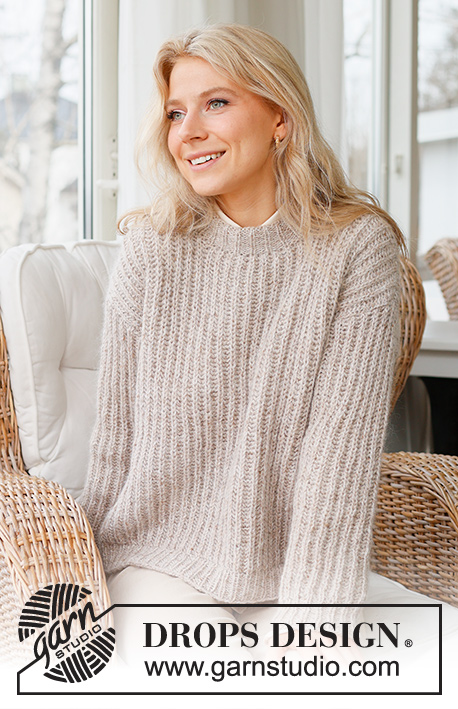 |
Knitted jumper in DROPS Soft Tweed and DROPS Kid-Silk. Piece is knitted bottom up with English rib. Size: S - XXXL
DROPS 237-20 |
|
|
---------------------------------------------------------- EXPLANATION FOR THE PATTERN: ---------------------------------------------------------- GARTER STITCH (back and forth): Knit all rows. 1 ridge vertically = knit 2 rows. ENGLISH RIB back and forth (applies to front and back piece): ROW 1 (= wrong side): Work 1 edge stitch in garter stitch, * Make 1 yarn over, slip 1 stitch on to right needle purlwise, knit yarn over and slipped stitch together *, work from *-* until 1 stitch remains, make 1 yarn over, slip 1 stitch on to right needle purlwise and cast on 1 new stitch and the end of row. ROW 2 (= right side): Work 1 edge stitch in garter stitch, * knit yarn over and slipped stitch together, make 1 yarn over, slip 1 stitch on to right needle purlwise *, work from *-* until 2 stitches remain, knit yarn over and slipped stitch together and 1 edge stitch in garter stitch. ROW 3 (= wrong side): Work 1 edge stitch in garter stitch, * make 1 yarn over, slip 1 stitch on to right needle purlwise, knit yarn over and slipped stitch together *, work from *-* until 2 stitches remain, make 1 yarn over, slip 1 stitch on to right needle purlwise and 1 edge stitch in garter stitch. ROW 4 (= right side): Work 1 edge stitch in garter stitch, * knit yarn over and slipped stitch together, make 1 yarn over, slip 1 stitch on to right needle purlwise *, work from *-* until 2 stitches remain, knit yarn over and slipped stitch together and 1 edge stitch in garter stitch. Repeat rows 3 and 4. ENGLISH RIB in the round (applies to body and sleeves): ROUND 1: * Make 1 yarn over, slip 1 stitch purlwise, knit yarn over and slipped stitch together *, repeat from *-* the entire round. ROUND 2: * Purl yarn over and the slipped stitch together, make 1 yarn over, slip 1 stitch purlwise *, repeat from *-* the entire round. Repeat rounds 1 to 2. ENGLISH RIB STITCH: When counting the stitches, the yarn overs are not counted as stitches. DECREASE TIP (applies to neck): All decreases are done on a row from the right side! DECREASE 2 STITCHES AT THE BEGINNING OF ROW AS FOLLOWS: Work 1 edge stitch in garter stitch and 1 English rib stitch as before, slip next stitch and related yarn over on to right needle knitwise, knit the next 2 stitches (and related yarn over) together and lift slipped stitch and yarn over over stitches worked together. DECREASE 2 STITCHES AT THE END OF ROW AS FOLLOWS: Work until 5 stitches remain, knit the next 3 stitches (and related yarn overs) together, work 1 English rib stitch as before and 1 edge stitch in garter stitch. INCREASE TIP (applies to sleeves): Work 3 stitches in 1 knit stitch as follows: Knit yarn over and stitch together but wait to slip stitch and yarn over off the needle, make 1 yarn over on right needle and knit stitch and yarn over together 1 more time, then slip knit stitch and yarn over knitted off left needle = 3 stitches. Increase alternately in first and last knit stitch on round. Do first increase in first knit stitch, second increase in last knit stitch etc. ---------------------------------------------------------- START THE PIECE HERE: ---------------------------------------------------------- JUMPER - SHORT OVERVIEW OF THE PIECE: Work body in the round, bottom up. Divide the piece for front piece and back piece and finish each part separately back and forth. Work sleeves in the round on double pointed needles/a short circular needle. Neck edge is worked in the round. BODY: Cast on 216-228-246-270-288-312 stitches on circular needle size 4 mm with 1 strand of each quality. Knit 1 round. Work rib (purl 2/knit 1). When rib measures 5 cm, work next round as follows: * Purl 2 together, make 1 yarn over, slip 1 stitch on to right needle purlwise *, work from *-* over all stitches = 144-152-164-180-192-208 stitches. Switch to circular needle size 5.5 mm. Work ENGLISH RIB in the round - read explanation above. Read ENGLISH RIB STITCH! When piece measures 37-38-39-40-41-42 cm, adjust so that next round is 1st round in English rib, divide the piece into front piece and back piece as follows: Insert 1 marker at the beginning of the round, decrease 1 stitch by knitting together 2 stitches + 1 yarn over, work as before over the next 70-74-80-88-94-102 stitches, insert 1 marker, decrease 1 stitch by knitting together 2 stitches + 1 yarn over, work as before over the last 70-74-80-88-94-102 stitches and cast on 1 new stitch at the end of the round. There are 71-75-81-89-95-103 stitches between markers for front and back pieces + 1 edge stitch at the end of the round. Now finish each part separately. BACK PIECE: Now work ENGLISH RIB back and forth – read explanation above (work first row from wrong side). When the first row has been worked, there are 73-77-83-91-97-105 stitches on needle. Work English rib with 1 edge stitch in garter stitch in each side. When piece measures 52-54-56-58-60-62 cm, cast off the middle 23-23-25-25-27-27 stitches for neck on next row from right side and finish each shoulder separately (25-27-29-33-35-39 stitches remain on each shoulder). On next row from right side decrease 2 stitches for neck – read DECREASE TIP = 23-25-27-31-33-37 stitches. Cast off with knit over knit and purl over purl when piece measures 56-58-60-62-64-66 cm (work yarn overs together with stitch they belong to). Work the other shoulder the same way. FRONT PIECE: Slip stitches back on circular needle size 5,5 mm, start casting on 1 new stitch at the end of the row (seen from right side), turn piece and work ENGLISH RIB back and forth as back piece until piece measures 48-50-50-52-52-54 cm. On next row from right side, slip the middle 15-15-17-17-19-19 stitches on a thread for neck and finish each shoulder separately (29-31-33-37-39-43 stitches remain on each shoulder). On next row from right side decrease 2 stitches for neck. Decrease like this every 8th-8th-10th-10th-12th-12th row 3 times in total = 23-25-27-31-33-37 stitches. Cast off with knit over knit and purl over purl when piece measures 56-58-60-62-64-66 cm (work yarn overs together with stitch they belong to). Work the other shoulder the same way. SLEEVES: Cast on 54-54-57-60-63-66 stitches on double pointed needles size 4 mm with 1 strand of each quality. Knit 1 round. Work rib (purl 2/knit 1). When rib measures 5 cm, work next round as follows: * Purl 2 together, make 1 yarn over, slip 1 stitch on to right needle purlwise *, work from *-* over all stitches = 36-36-38-40-42-44 stitches. Switch to double pointed needles size 5.5 mm. Work ENGLISH RIB in the round. When sleeve measures 20-20-18-16-14-12 cm, increase 2 stitches on next round - read INCREASE TIP. Work the increased stitches in English rib. On first round work the increased stitches without yarn overs. Increase like this every 10th round 7-8-9-9-9-9 times in total = 50-52-56-58-60-62 stitches. Cast off with knit over knit and purl over purl (work yarn overs together with stitches they belong to) when sleeve measures 47-46-45-43-42-40 cm. Work the other sleeve the same way. ASSEMBLY: Sew the shoulder seams. Sew in sleeves inside 1 edge stitch along armholes. NECK EDGE: Pick up approx. 84 to 114 stitches (including stitches on thread) on a short circular needle size 4 mm with 1 strand of each quality. Work yarn overs that belong to English rib stitches from thread together with stitch they belong to. Number of stitches must be divisible 3. Work rib (purl 2/knit 1). When rib measures 4 cm, cast off knit over knit and purl over purl. |
|

|
|
|
Have you made this or any other of our designs? Tag your pictures in social media with #dropsdesign so we can see them! Do you need help with this pattern?You'll find tutorial videos, a Comments/Questions area and more by visiting the pattern on garnstudio.com. © 1982-2024 DROPS Design A/S. We reserve all rights. This document, including all its sub-sections, has copyrights. Read more about what you can do with our patterns at the bottom of each pattern on our site. |
|
With over 40 years in knitting and crochet design, DROPS Design offers one of the most extensive collections of free patterns on the internet - translated to 17 languages. As of today we count 304 catalogues and 11422 patterns - 11422 of which are translated into English (UK/cm).
We work hard to bring you the best knitting and crochet have to offer, inspiration and advice as well as great quality yarns at incredible prices! Would you like to use our patterns for other than personal use? You can read what you are allowed to do in the Copyright text at the bottom of all our patterns. Happy crafting!







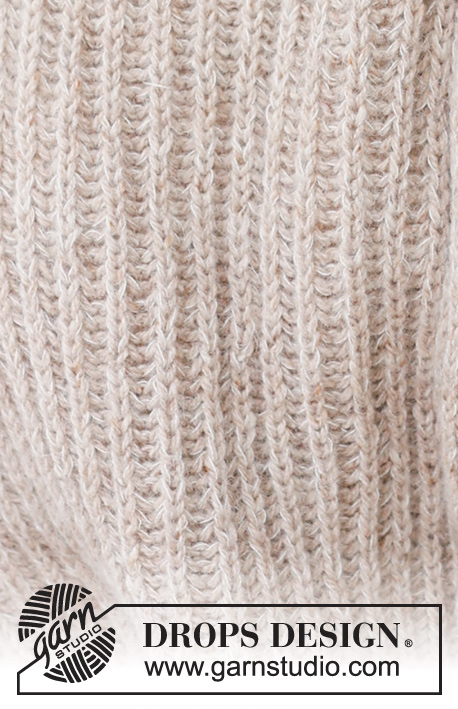


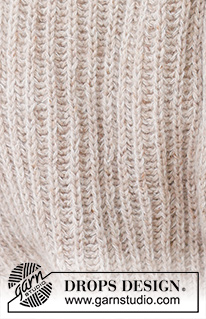

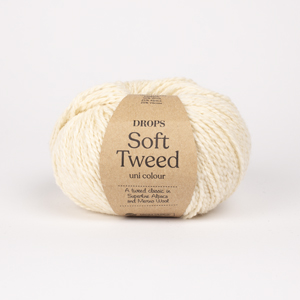


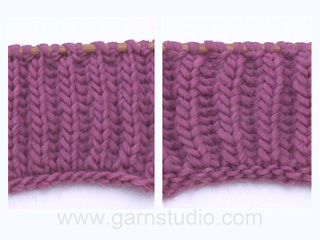
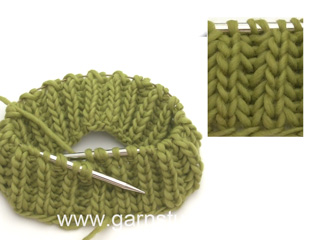
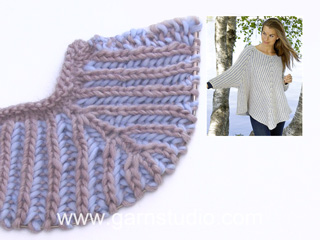
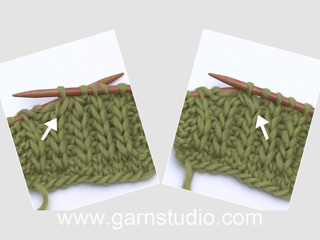












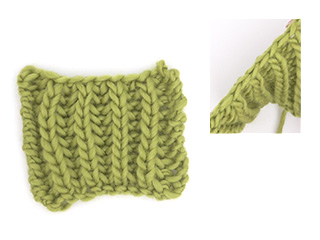
































Comments / Questions (25)
Hej - kan man strikke i andet drops garn en Soft Tweed? Der er ikke lige den farve jeg ønsker mig :-)
02.03.2024 - 13:47DROPS Design answered:
Hej Kristine, ja du kan strikke den i alle vores garner fra garngruppe B: Garngruppe B Du kan også prøve vores garn-omregner som du finder til højre for billedet inde på opskriften :)
13.03.2024 - 15:01Deze trui pluist enorm hard in de combinatie soft tweed en kid-silk. Is er een manier om dat pluizen tegen te gaan zodat de rest van je kleding niet steeds onder de draadjes zit?
19.01.2024 - 11:26DROPS Design answered:
Dag Mieke,
Wellicht heb je wat aan de tips tegen pluizen. (Even een stukje naar beneden scrollen op de pagina.
21.01.2024 - 11:59Hallo, was bedeutet : je 1 Randmasche kraus rechtsbeidseitig? Wenn ich die teile getrennt weiter stricke. Wird dann die 1. und letzte Masche immer gestrickt? Oder die 1.immer re. abgehoben und die letzte re gestrickt ? Wie bei Knötchenrand.\r\nDanke schon mal im voraus
15.10.2023 - 17:44Hallo, was bedeutet : je 1 Randmasche kraus rechtsbeidseitig? Wenn ich die teile getrennt weiter stricke. Wird dann die 1. Und letzte Masche immer gestrickt? Oder die 1.immer re. abgehoben und die letzte re gestrickt ? Wie bei Knötchenrand.\r\nDanke schon mal im voraus
15.10.2023 - 17:31DROPS Design answered:
Liebe Regina, die Randmaschen (- die 1. und die letzte Masche) werden rechts bei jeder Reihe (Hin- sowie Rück-Reihe) gestrickt - in diesem Video zeigen wir, wie man ein Vollpatent mit 1 Randmasche kraus rechts strickt.. Viel Spaß beim stricken!
16.10.2023 - 10:04J'ai eu le même problème que Mme Bougant au moment de la séparation du dos et du devant et des mailles à rabattre. Le problème vient je pense d'une ambiguïté dans les explications (en français notamment) où l'on peut comprendre que la séparation doit intervenir au niveau d'un tour 2... alors que si on la fait au niveau d'un tour 1, il n'y a aucun souci, tout se passe parfaitement bien. Peut-être faudrait-il l'indiquer un peu plus clairement.
11.10.2023 - 18:43DROPS Design answered:
Bonjour Emmanuelle, le tour de séparation du dos et du devant doit bien être un tour comme le 2ème tour des côtes anglaises, et pas comme le premier, ainsi la 1ère maille rabattue au début du tour est la maille que l'on doit tricoter ensemble à l'envers avec son jeté (- la 1ère maille du tour 2 quand on répète de `*-*). Bon tricot!
12.10.2023 - 09:17Hej. Olika garnmängder i mönstret. KID silk liten mängd i förhållande till det andra? Första varvet helpatent går ej att göra fick se ett annat mönster Förstår inte ert första varv? Vänliga hälsningar Pia
28.09.2023 - 10:22DROPS Design answered:
Hej Pia, jo da du har flere meter på Kid-Silk, så behøver du ikke lige så mange nøgler. Jo det går! Du starter med HELPATENT RUNT när du har stickat resåren och bytt till sticka 5,5
05.10.2023 - 10:19Bonsoir, Désolée de reposter mais personne sur Drops Facebook n’a de solution. Sur la photo que j’ai envoyé, on voit bien que sur le premier rang à tricoter sur l’envers les jetés sont obligatoirement croisés avec la maille glissée, ce qui rend impossible de ne pas avoir cette démarcation. Savez-vous qui tricote les modèles Drops ? Merci
14.06.2023 - 19:10DROPS Design answered:
Bonjour Mme Bougant, vérifiez bien la façon de réaliser les côtes anglaises (les jetés par-dessus les mailles glissées), ces mailles doivent être tricotées ensemble, si votre jeté apparaît torse il est sûrement possible que vous le replaciez simplement comme il faut. J'ai personnellement souvent tricoté ce type de côtes anglaises et même fait un échantillon au moment de vous répondre la première fois, je suis toujours tombée juste. Consultez les différentes vidéos des côtes anglaises en rond et en allers et retours, cela devrait vous aider. Votre magasin peut également avoir l'expérience de ce type de souci ou bien un autre forum. Bonne chance!
15.06.2023 - 08:53En fait le problème se situe sur le rang où l’on doit rabattre les mailles
12.06.2023 - 12:46DROPS Design answered:
Bonjour Mme Bougant, la 1ère m du tour doit être une m envers, et c'est cette m que l'on rabat, on tricote la moitié des mailles (cf votre taille) et on rabat la m suivante = une m envers, et on termine le tour. Ensuite, on doit tourner pour tricoter le rang suivant sur l'envers, les côtes anglaises se tricotent maintenant différemment de la 1ère partie. N'hésitez pas à demander directement conseil à votre magasin (même par mail ou téléphone) ou demandez conseil (en montrant une photo votre ouvrage) dans notre groupe DROPS Workshop, pour que d'autres tricoteuses puissent essayer de vous aider. Bon tricot!
12.06.2023 - 13:38Bonjour, Je reviens vers vous pour le même problème. Il faut rabattre ensembles le jeté et la maille envers quand on sépare? J’ai détricoté car en repartant sur l’envers, certaines mailles sont croisées et on voit clairement une ligne de démarcation. Je suis perdue. Merci de votre aide
10.06.2023 - 13:57DROPS Design answered:
Bonjour Mme Bougant, je ne suis pas bien sûre de comprendre vos mailles croisées, lorsque vous avez tricoté le dernier tour en rabattant 1 m de chaque côté, vous devez tricoter le 1er rang sur l'envers comme indiqué sous les CÔTES ANGLAISES en allers et retours (devant et dos):, commencez par *1 jeté et glissez la m suivante à l'envers, tricotez ensemble à l'endroit la maille suivante et son jeté*, répétez de *à* et montez 1 maille. Tricotez ensuite le rang 2 avec 1 m lis au point mouse (la maille montée), et répétez de *-* du rang 2 en montant 1 m à la fin du rang. Répétez ensuite les rangs 3 et 4. Bon tricot!
12.06.2023 - 09:32Bonjour, J’ai un problème pour séparer le devant et le dos. La vidéo d’aide pour rabattre les mailles en côtes anglaises avec jeté montre un rabattage en aller retour qui ne correspond pas avec la première maille en rond qui commence au rang 2 par un jeté et une maille glissée puis une maille endroit. Comment faut-il faire donc pour rabattre le jeté et la maille glissée envers ? Merci
06.06.2023 - 15:19DROPS Design answered:
Bonjour Mme Bougant, lorsque l'on sépare le dos et le devant pour les tricoter séparément en allers et retours on rabat simplement la 1ère maille du tour (1 maille envers), puis on tricote comme avant les mailles suivantes (cf nombre pour votre taille) et on rabat 1 maille envers et on tricote les dernières mailles. Vous avez maintenant 1 m endroit des côtes anglaises au début et à la fin du dos et du devant. Tricotez le rang 1 des CÔTES ANGLAISES en allers et retours (devant et dos):: vous montez 1 m à la fin du rang, au rang 2, vous montez 1 m à la fin du rang = vous avez 1 m lisière de chaque côté. Continuez en répétant les rangs 3 et 4. Bon tricot!
06.06.2023 - 17:19